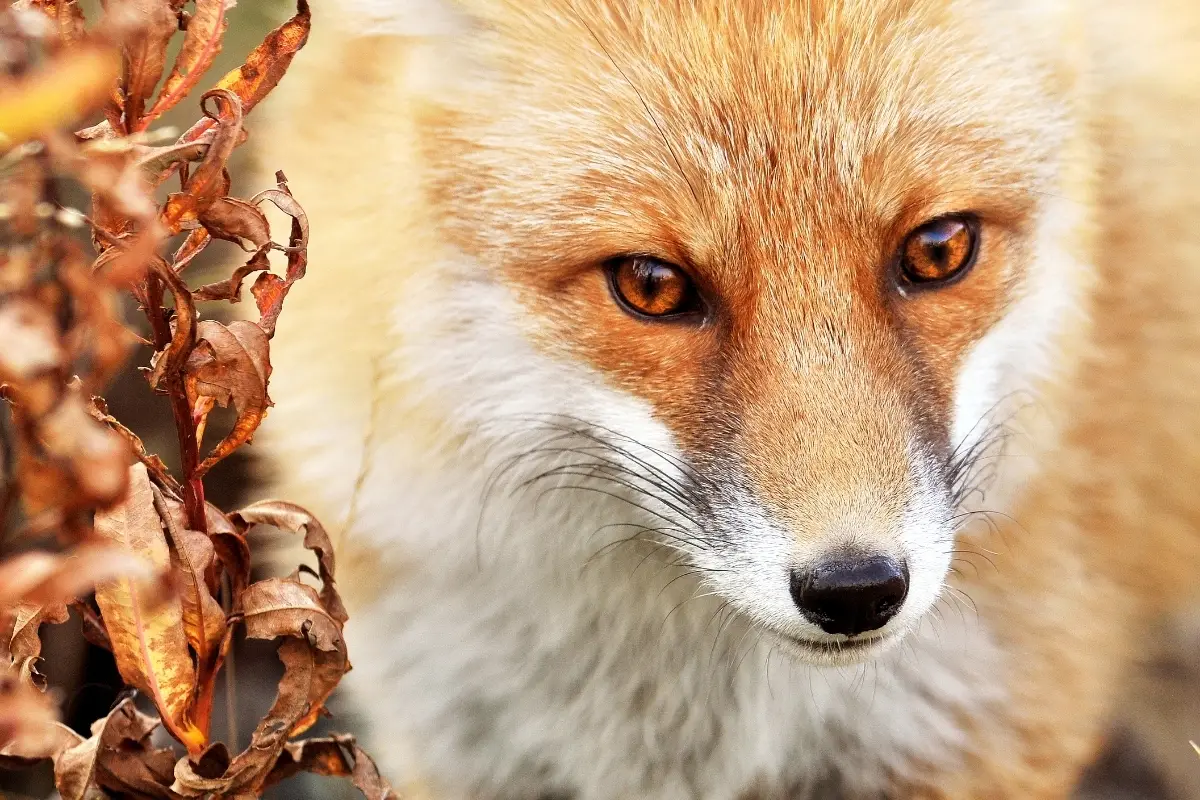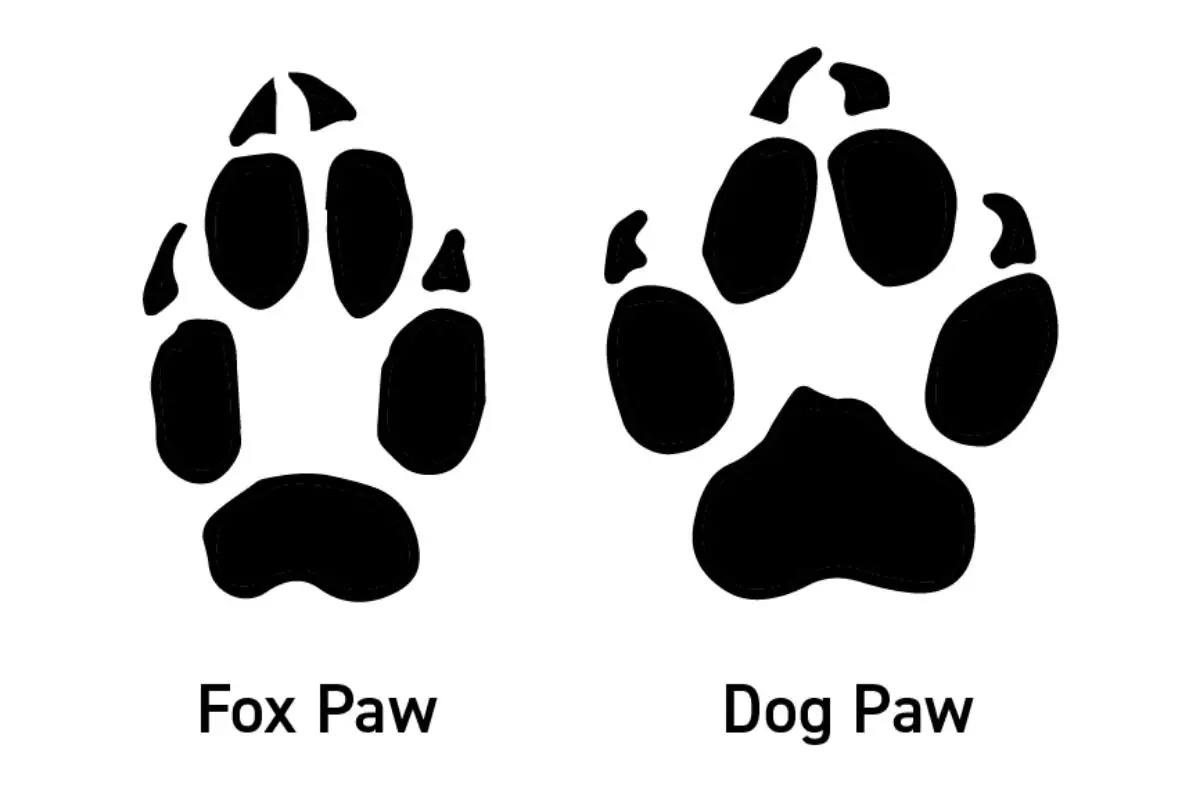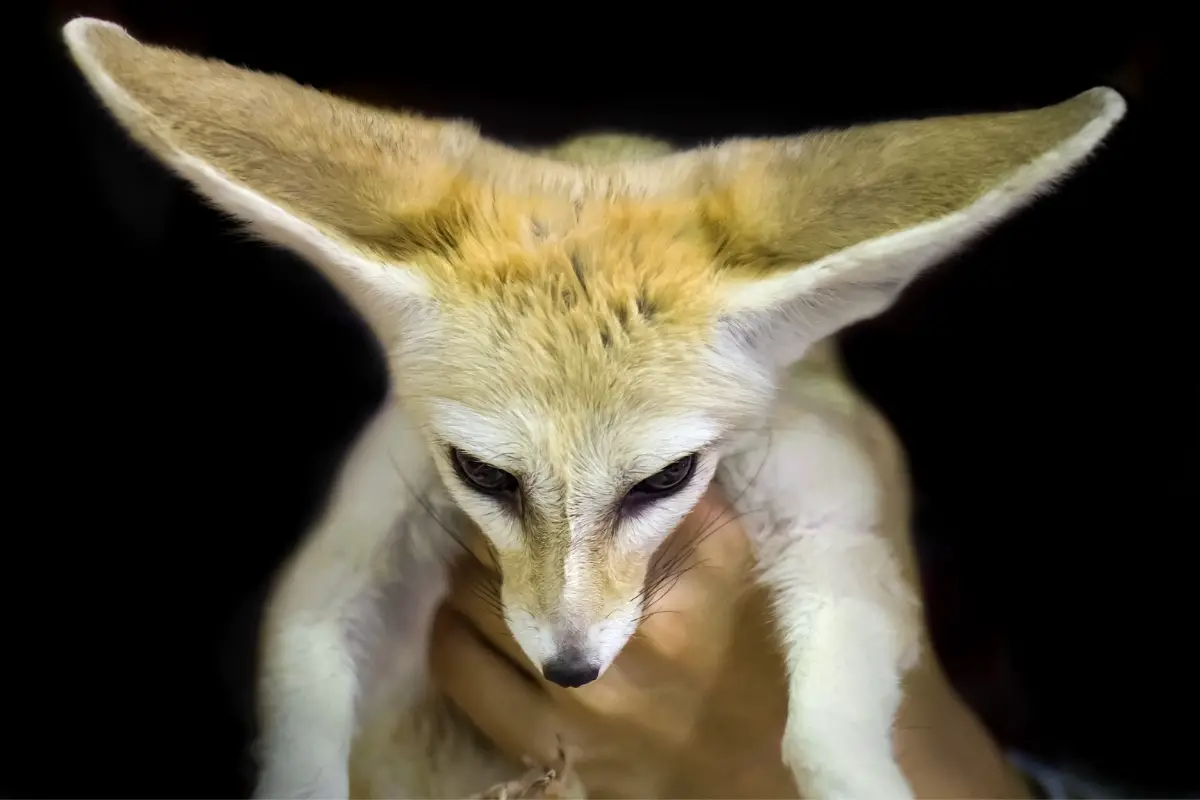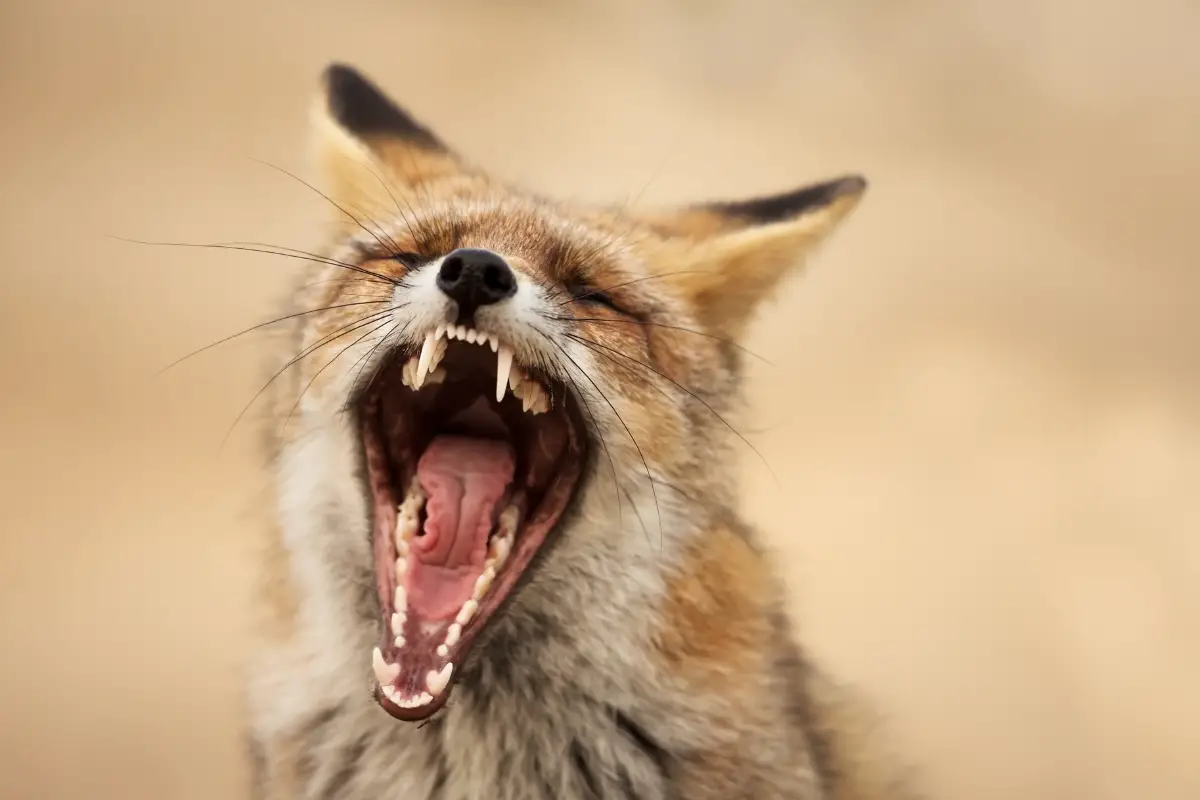Foxes have a particular look, that makes them completely unique. They are small to medium-sized mammals. The average red fox is roughly the same size as a large housecat.
What a Fox Looks Like
A fox is a small animal that has a large tail and pointy ears. A red fox’s body is orange, with white underbellies, and black legs. A fox’s tail is called a brush, and the white tip of the red fox’s tail is called a tag.
Foxes come in many shapes, and sizes, depending on the part of the world where they live. Red foxes are the most common of all the foxes and live in many places around the world. We’re going to talk about what foxes look like, and what characteristics they share.

Fox Ears
Foxes are in the Canidae family, and much like other canids, they rely heavily on their ears as tools to survive. Their large ears are sometimes called trumpets. The fox’s ears serve them in many important ways.
Red foxes use their ears like radars, they can rotate them around to pick up sounds from prey or predators. Fox ears can pick up low frequencies. This helps them listen for small rodents, that make up a large part of their diets.
Fennec foxes are the smallest of the foxes. They have tiny bodies, around 2-3 pounds, and what they lack in body size, they make up in ear size! Fennec foxes, and other desert foxes, such as bat-eared foxes, have extremely large ears.
The blood vessels in their ears help them to regulate blood flow, and body temperature, which is an important adaptation in the desert.
Foxes Eyes
Fox’s eyes contain a world of mystery. Foxes have many features that draw your attention to them, but their eyes have an intensity that that just feels passionate. Foxes are nocturnal by nature. This is evident from the way they can see in the dark, as well as in the daytime.
Most fox pupils are vertically split, instead of round, like other canids. The structure of their eyes is very similar to cat eyes. The vertical pupils, give them the ability to restrict light going into the eye. This allows them to see in many different light conditions, such as night, twilight, and daylight.
Their eyes reflect light, also, much like cats. A layer in their eyes, called the tapetum lucidum, gives them night vision. Because their eyes reflect the light that passes through them, at night it may seem like their eyes are glowing. However, it is just the light reflection.
Fox’s eyes are usually brown, red, or yellow, but they can also be amber, orange, blue, and even green.

Fox Tails
A fox’s tail is called its brush. Their thick bushy tails, help to define their overall appearance. One can not help but think of the tail when they think about a fox. Their tails can also help identify fox species.
Red foxes, gray foxes, arctic foxes, and fennec foxes, all have different colors in their tails. Red foxes have a bushy orange tail (or another color morph), usually with a white tip, known as the tail’s tag. Gray foxes have a peppered color tail, usually with a black strip down the top of it, with a back tip or tag.
Fennec foxes have a tan or cream-colored tail, with a back tag at the end. Not every fox has the same tail colors, and colors and tags vary with each fox. Foxes use their tails in several interesting ways.
A fox will use its tail to signal to other foxes, as a form of communication. The hair will stand up on their backs and tails if there is a threat. They can also signal other family members that prey is near.
Foxes use their tails as insulation. They will wrap themselves up in their tails, to help regulate body temperature, which helps them survive in cold harsh weather conditions. Many foxes also sleep with their tails curled up, as one of their sleeping positions/postures.
Fox Paws and Identifying Fox Prints
Fox feet, also know as paws, have a unique print, that can make it easier to identify them. Tracking animals in an area can help calculate wild animal populations, and provides valuable information.
Foxes are pretty small animals. Red foxes weigh between 10-30 pounds. The hind legs on foxes are slightly longer and are somewhat disproportionate. This gives them a little more spring to their step when pouncing from a crouch.
The fox’s forepaws have 5 digits, four toes, and one dewclaw. The hind feet have only four digits, with the four toes, and no dewclaw. Fox’s toe pads are covered in fur. This is extremely important for arctic foxes and red foxes that live in the northern hemisphere. The fur on the pads helps keep them from getting frostbite and muffles their footsteps when approaching their prey.
Dogs, and other canids, have larger bottom footpads, and foxes have slender toes. Fox’s toes are more oval, while dog toes are more round. Fox’s toes are straighter than dog toes. Dog toes tend to bend in towards each other a little.
This can help you tell the difference between foxes and other canids, such as domestic and wild dogs. Fox tracks have a stride of fewer than 12 inches. The length of a fox paw print is under 3 inches.

Fox Fur
A fox’s fur is thick during the winter months, and thins out during the summer, usually causing the fox to change colors slightly. In the winter thick fur is an important adaptation since many foxes live in the colder regions of the world.
Fox fur has been sought after by trappers, and have been used by indigenous people, for survival. Fox fur is also sought after by wealthy people, who use the fur for fashion. Many faux fox fur alternatives exist today.
What Does a Red Fox Look Like?
An average red fox has mostly orange or reddish fur. Underbellies of red foxes are usually white, along with white on their cheeks, and sometimes ears. Red foxes usually have black feet and partially black legs.
There are many different color morphs of red foxes. Some foxes are partially melanistic, such as cross foxes, and silver foxes. These foxes can be a mix of red, black, and gray. There are also, white color morphs, and completely melanistic/black mutations of red foxes.
Because of these different red fox color morphs, it can sometimes be hard to tell the difference between these morphs and other foxes, like arctic foxes, and gray foxes.
You can tell the difference by the shapes of their faces, arctic foxes have wider faces, and shorter ears and gray foxes have a black stripe on their backs and a black-tipped tail. See more about fox color variations in our article here.
What Does a Gray Fox Look Like?
Gray foxes are usually a little bit smaller than a red fox. They have peppered color fur, with some white and orange around their faces. Gray foxes have a black stripe on their backs and the tips of their tails.
You can usually tell a gray fox by the black tag on the end of its tail, and by the black stripe on its back. The fur of a gray fox looks a lot like the gray color of tree bark, and they have adapted to camouflage in the wooded areas where they live.
What Does an Arctic Fox Look Like?
An arctic fox is a fox that lives mostly in the northern hemisphere. The arctic fox weighs between 7-20 pounds, and the females weigh less than males. Arctic foxes have two color morphs that occur naturally in the wild, the white morph, and the blue morph.
The white morph helps them blend into the snow, and is the most common of the two color morphs. The blue morph is usually a charcoal gray or blueish gray color. In the summer months, both color morphs tend to change colors, into a brown, or white and dark color.
What Does a Fennec Fox Look Like?
Fennec foxes are small foxes, that are usually a tan color. The colors can vary from light cream to dark tan or even a peppered tan. They are tiny foxes with huge ears and fluffy tails. The fennec fox usually has a black-tipped tail or black tag.
Fennec foxes have large dark eyes, usually brown. Their main body color can vary from different types of tan, cream, and even orange colors. The colors of fennec foxes, helps them to blend into the desert environment where they live.

What Animals Look Like a Fox?
Foxes have so many different characteristics, that they can look like many other animals. Sometimes foxes look and act a lot like cats, even though they are related to dogs.
Foxes look like these animals:
- Dogs
- Cats
- Coyotes
- Wolves
- Hyenas
- Jackals
Since the fox is in the Canidae family, they can look a lot like other wild canids. Hopefully, this article has given you some insight, on what a fox looks like, and how to recognize one in the wild.
When people think of foxes, they picture the red fox, with its large white-tipped tail and brilliant flame color fur.
Caroline Arnold

Frequently Asked Questions
Fox with skinny tail?
Foxes can sometimes get diseases, such as mange, which can cause their fur to look thin and scruffy. This can make their tails look skinny.
Fox with white tip on tail?
Red foxes have white tips on their tails, called tags. Other red fox morphs, such as silver foxes and black foxes, can also have white-tipped tails.
Why do foxes have whiskers on their legs?
Foxes have whiskers on their face and their legs, that help them navigate in the dark and through tall grasses.
What does a fox nose look like?
Fox’s noses look a lot like domestic dog noses. They are usually a dark color, but the color of fox noses can vary on each fox. Foxes with albino morphs tend to have pink noses.

